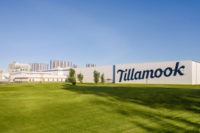Consumers are driving the demand for greener packaging and greener living, according to one survey by a packaging supplier. And the demand to increase sustainability efforts in manufacturing spans dairy and nondairy beverage processing alike. The choices that dairy and beverage manufacturers make when deciding on packaging materials and how they package their products are key to these efforts.
Use of PET bottles shows growth
Rick Beckman is the business development manager for sensitive products at Sidel, Norcross, Ga., a manufacturer of blow molding and filler equipment. Citing data from Euromonitor, he said milk-based and other liquid dairy products account for one-fifth of worldwide beverage sales, and are expected to grow at a compound annual growth rate (CAGR) of 5% between 2015 and 2019.
According to Beckman, globally, paperboard cartons and high-density polyethylene (HDPE) are currently the most widely used packaging formats for liquid dairy products (known as LDP), while glass is the most traditional packaging material. Although polyethylene terephthalate (PET) only accounts for 5% of packed liquid dairy beverages, the use of this packaging material is expected to increase at a compound annual rate of 6% for the next four years.
“In North America, the data indicates that we should see a growing interest in adopting PET packaging for LDP in the near future,” said Beckman. “More specifically, the number of LDP units in PET packaging between 2015 and 2019 is expected to increase at a CAGR of 7%. In terms of volume by packaging material, PET bottles are the only forecasted growth area, while HDPE bottles and gable top cartons should see a gradual decline.”
Beckman said that dairy producers appreciate PET’s 100% recyclability and its excellent barrier material properties that extend product shelf life without the need for aluminum foil.
“By preventing microorganism growth and alterations caused by the effects of light, oxygen and temperature, PET bottles protect sensitive products stored and distributed at ambient temperatures or in refrigerators,” he said. “PET also offers great physical product and food barrier protection benefits, maintaining the milk’s fresh taste and vitamin content, while allowing increased design freedom.”
The importance of sustainable packaging
In a global survey conducted by Denton, Texas-based Tetra Pak this year, more than three-quarters of consumers claimed that environmentally sound packaging has an influence on the beverage brand they buy.
The survey (which was among 6,000 consumers across 12 different countries) revealed a growing appetite for products that meet the right environmental conditions, according to Tetra Pak’s press release. When asked about recent purchasing habits, two-thirds said they have bought environmentally sound products, even when they cost more. Around the same proportion have avoided specific brands or items due to environmental concerns.
A parallel survey among food manufacturers showed that the majority of them have included the environment as part of their business strategy. More than half are now sharply focused on using responsibly sourced materials, with more seeing renewable materials as a key element in product differentiation, according to Tetra Pak.
Achieving sustainability goals goes beyond just the packaging materials — the right equipment and manufacturing practices matter as well. According to Beckman, Sidel’s fully dry cap and preform decontamination system, known as Predis and Capdis, can help ensure sustainability goals. The systems enable the complete decontamination of all types of preforms and caps with an integrated aseptic solution that is cost-effective and offers environmental benefits.
For example, instead of water, Predis and Capdis use only small amounts of hydrogen peroxide mist and can cut annual costs by up to 30% and reduce environmental impacts, said Beckman.
Learn more about the latest packaging equipment and technology, and sustainable packaging news at this year’s Pack Expo Show in Las Vegas at the end of this month.



.jpg?height=200&t=1630591584&width=200)